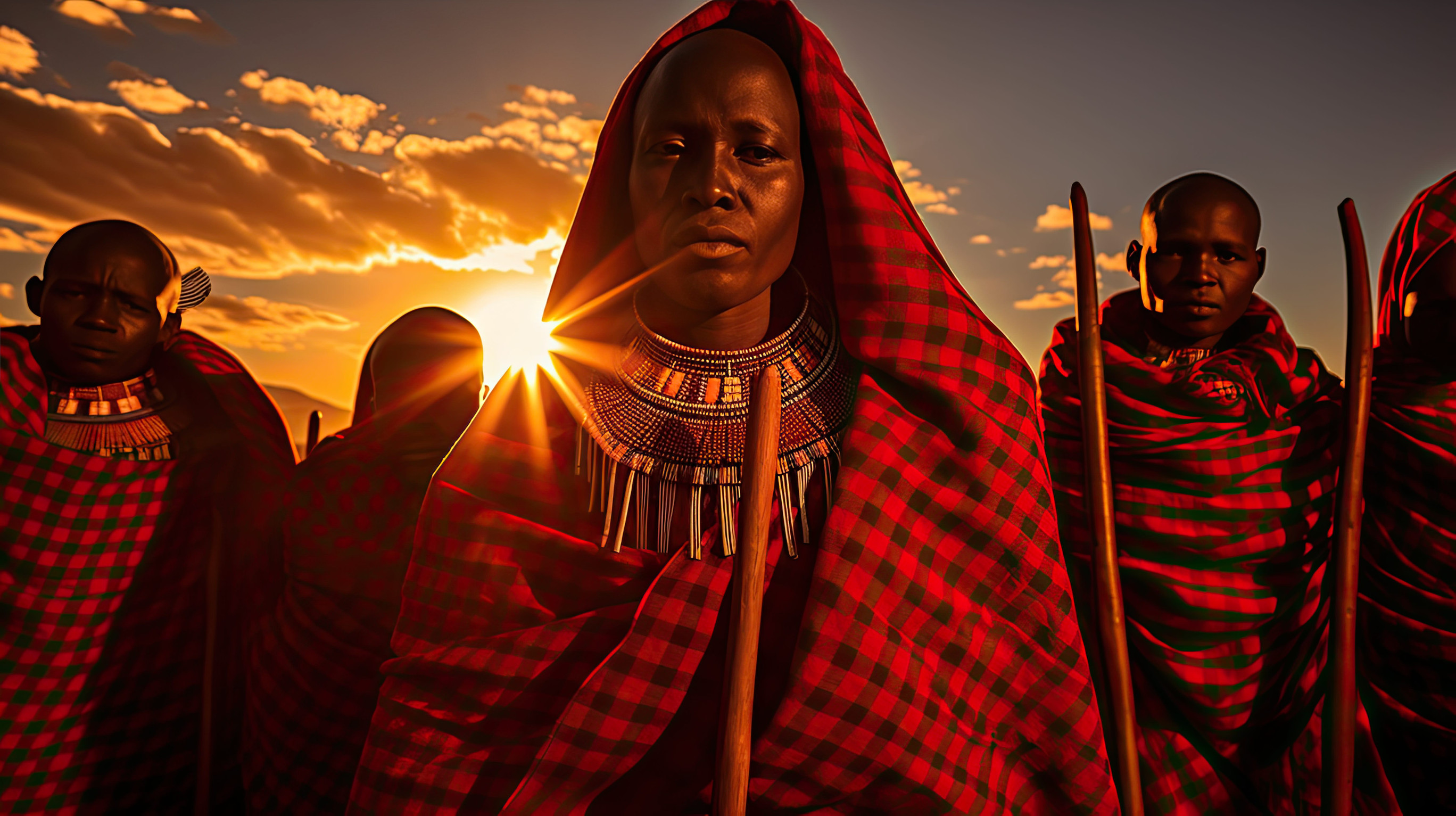
The Maasai people are one of the most well-known and respected ethnic groups in East Africa, particularly in Tanzania and Kenya. Known for their distinctive red attire, semi-nomadic lifestyle, and strong warrior culture, the Maasai have preserved their traditions for centuries despite modern influences. The Maasai people in Tanzania are known for their rich culture, vibrant attire, and traditional lifestyle. Visitors can experience Maasai villages, learn about their customs, and support local crafts. Secure your Tanzania eVisa for a smooth visit.
Who Are the Maasai People?
The Maasai are a Nilotic ethnic group that migrated from the Nile Valley (South Sudan region) to East Africa around the 15th century. They settled in what is now Tanzania and Kenya, mainly in the Great Rift Valley and Serengeti plains.
- Population: Around 1.5 million (in both Tanzania and Kenya)
- Language:Maa (a Nilotic language), but many Maasai also speak Swahili and English
- Location: Arusha, Manyara, Ngorongoro, Serengeti, and parts of Kenya
Despite modernization, the Maasai have resisted assimilation and continue to practice their semi-nomadic lifestyle centered around cattle herding and pastoralism.
The Role of Cattle in Maasai Life
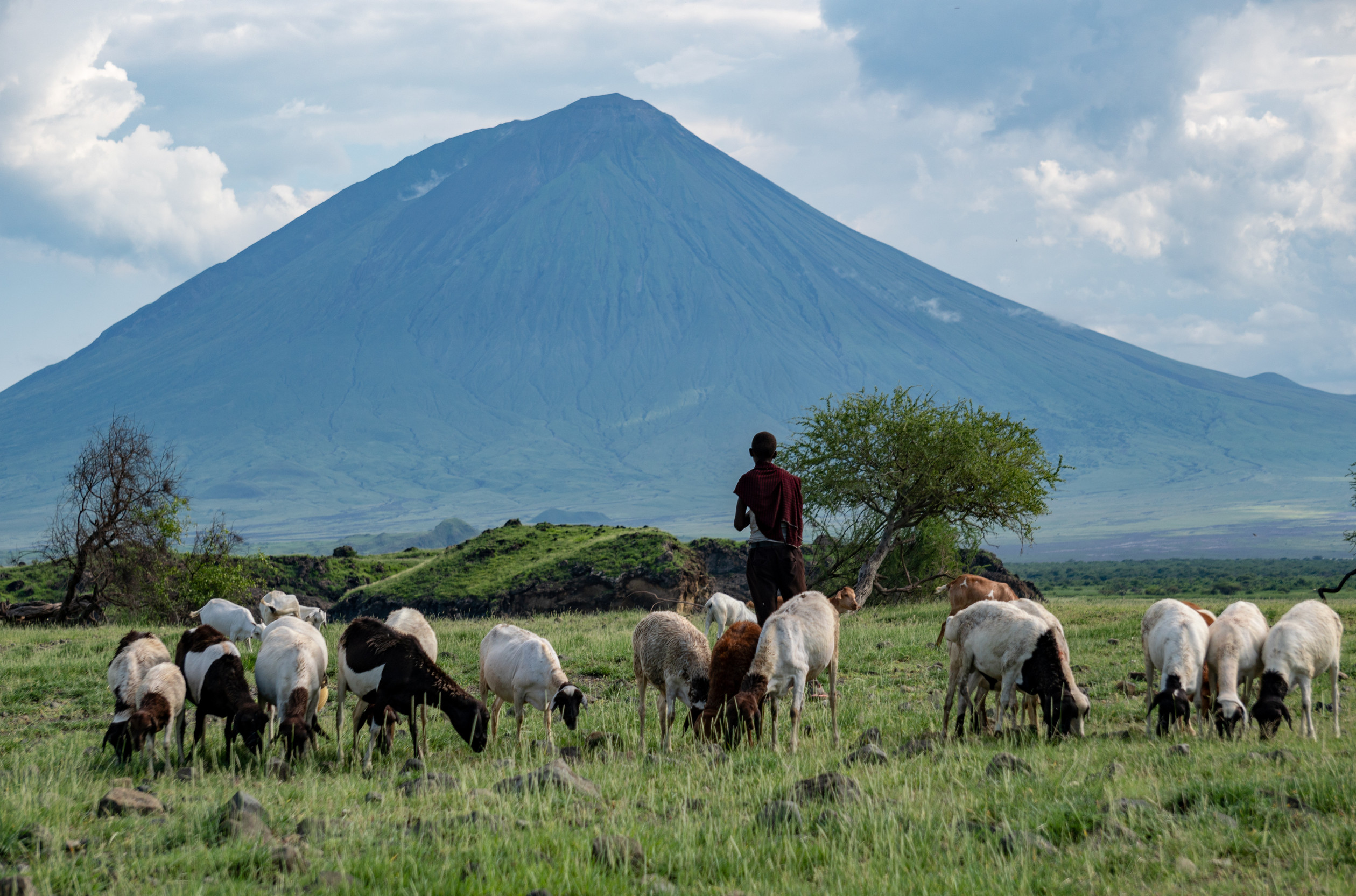
For the Maasai people of East Africa, cattle are far more than just animals—they are the foundation of their economy, culture, and spiritual beliefs. The Maasai’s deep connection with cattle influences their social status, diet, marriage traditions, and religious practices.
- Wealth & Status – A Maasai man's wealth and status are determined by the number of cattle he owns. The greater the number of cattle, the greater his respect and the higher his authority among the community.
- Source of Food – Cattle are the source of milk, meat, and blood (sometimes mixed with milk for nourishment). These are crucial sources of dietary nutrition in their pastoralist lifestyle.
- Marriage & Dowry – During a Maasai marriage, the male is supposed to provide cattle as dowry to the bride's family. The number of cattle contributed reflects the status and value of the marriage.
- Sacred Connection – Maasai individuals believe that cattle are a sacred gift from Enkai (God). Cattle become a center of rituals, ceremonies, and blessings, representing their religious status.
Since they are so heavily reliant on cattle, the Maasai are semi-nomadic and migrate continuously in pursuit of fresh pasture and water to maintain their herds' health and nutrition. This has evolved their unique identity and way of life for centuries.
Maasai Culture & Traditions
Maasai are perhaps the best-known indigenous nations of East Africa, famous for their colorful culture, semi-nomadic lifestyle, and immense fondness of animals. They are predominantly found in Tanzania and Kenya, and they have been successful in maintaining their cultural identity even with the process of modernization. Their bright attire, beaded ornaments, warrior society, and collective way of life render them a very lively and tenacious tribe. Social organization, rites, and legend are essential for the transmission of tradition from one generation to another.
Clothing & Adornment in Maasai Culture
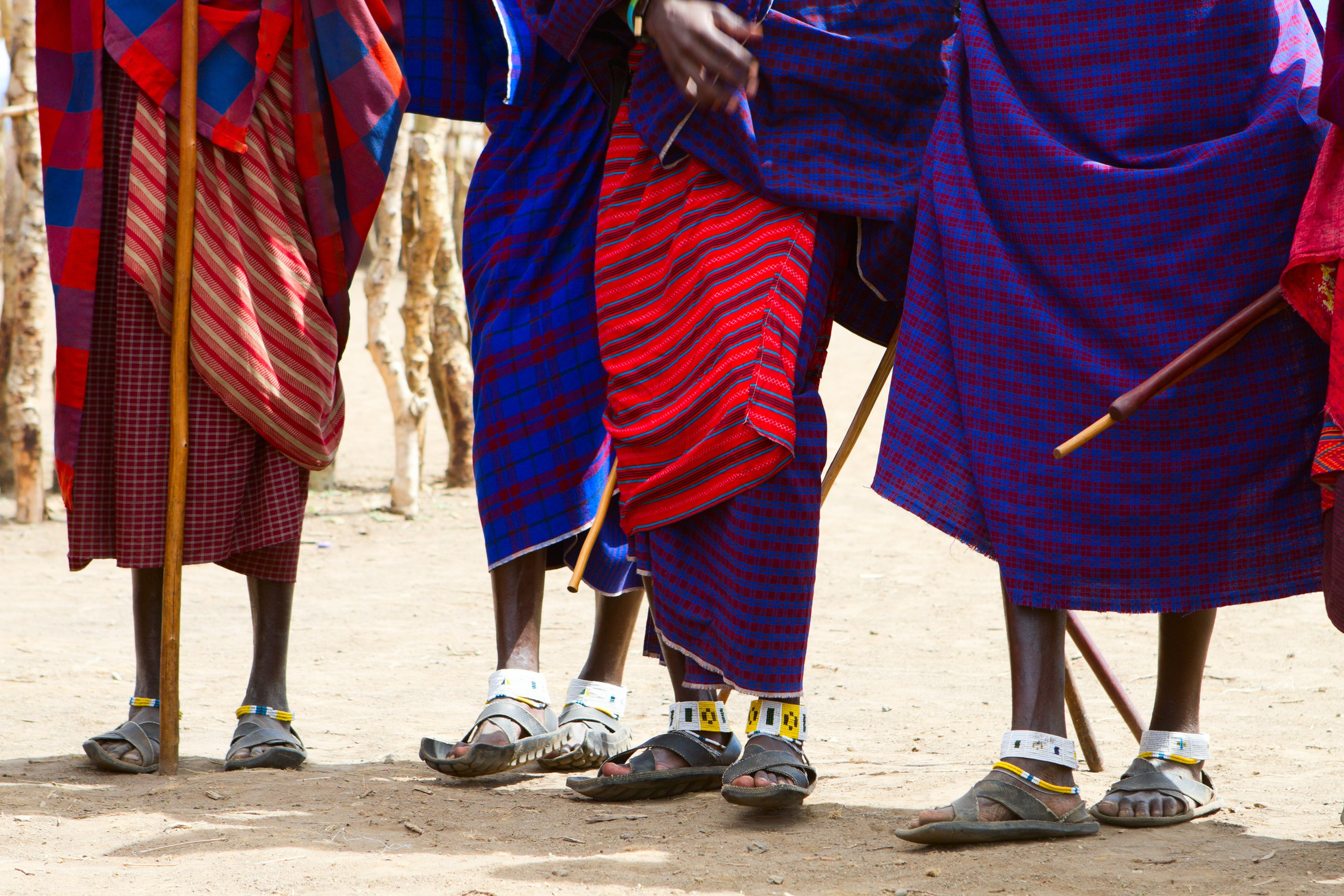
The Maasai are easily distinguishable by their brightly colored red clothing, elaborate bead decorations, and distinctive body adornments, all of which are culturally symbolic. Men dress in a shúkà, a blue or red cloth wrapped around the body, and women dress in brightly colored wraps with elaborate beading. The beaded jewelry worn by Maasai women is not just for aesthetics but represents age, social status, and marriage status, and the colors and patterns have specific meanings. Ear stretching is another striking element of Maasai decoration, where both men and women pierce and gradually stretch their earlobes as a mark of beauty and tradition. Among the most symbolic aspects of Maasai dress are their use of the color red, which to them is emblematic of courage and a means of repelling wild animals. These are not just cultural signs and markers of identity, nor expressions of individual identity, but are passed on from generation to generation.
Maasai Warrior Traditions
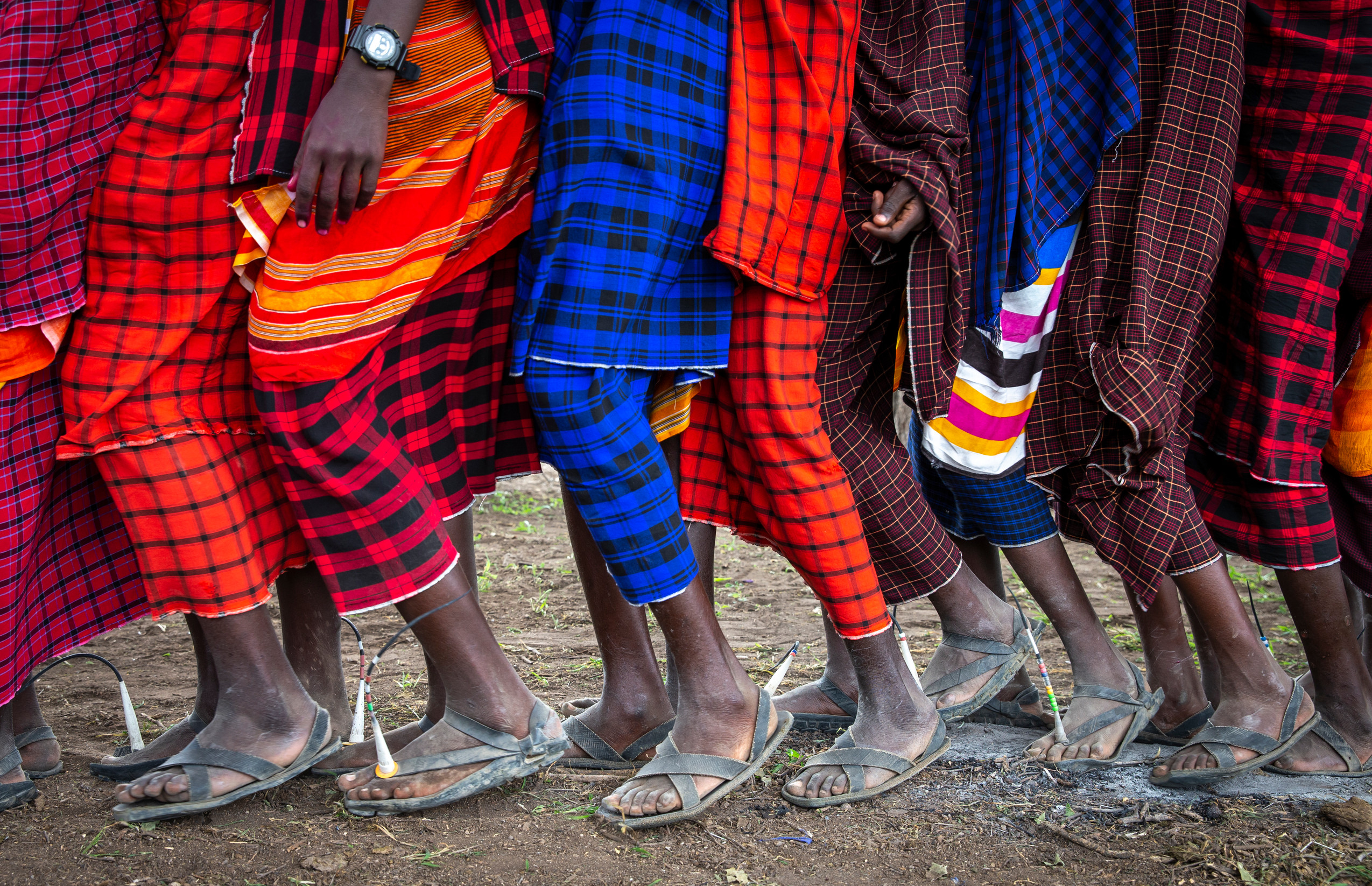
The Morans, or young warriors, play a vital role in Maasai society as protectors of the community. Warrior training begins at a young age, with boys undergoing initiation rites that mark their transition into adulthood. This includes endurance challenges, survival skills, and learning to defend their people and cattle. In the past, one of the most significant rites of passage was the traditional lion hunt, where a young warrior would prove his bravery by killing a lion. However, due to wildlife conservation efforts, this practice is now banned and replaced with symbolic ceremonies. A key cultural tradition of the Morans is the Adumu, or jumping dance, performed during special ceremonies. Warriors take turns leaping as high as possible in a test of strength, stamina, and agility, while the community sings and cheers them on. These warrior traditions not only preserve Maasai heritage but also reinforce the values of courage, leadership, and unity within their society.
Marriage & Family Structure in Maasai Society
Marriage is a critical component of Maasai culture, and it adheres to customary traditions that have been transmitted from generation to generation. The Maasai are polygamists, and a man is allowed to take more than one wife, with marriages being arranged by families. A groom is required to pay a bride price before marriage, which is primarily in the form of cattle, representing wealth and respect for the bride's family. Because Maasai are polygamous, Maasai men tend to have large families with many wives and children living together in a communal setup in a shared home.Women in the household collectively play a very significant role in the building of houses, water fetching, cooking, and creating beadwork. Because men are typically occupied with caring for the cattle and in protecting the community, women hold the day-to-day life of the family together by continuing cultural traditions.
Initiation & Coming-of-Age Ceremonies in Maasai Culture
The Maasai initiation ceremony marks the arrival of age, a significantly vital occasion within the society. Emuratare (circumcision) is one of the most renowned rites of passage, which was previously performed on girls as well as boys. While male circumcision remains a highly essential part of the culture, female circumcision is currently discouraged due to medical risks and increasing information regarding its implications. For boys, undergoing Emuratare is a test of bravery and endurance because they are expected to remain silent throughout the process to prove that they are strong. Boys transition into a warrior stage (Morans) after circumcision, where they are taught how to protect the community.
As men age, they transition to elderhood, where they possess more decision-making authority. The most respected elders, the Laibons, are spiritual leaders and advisers who guide the community in conflict resolution, rituals, and traditions. These initiation rituals ensure Maasai values and leadership structures stay strong across generations.
The Maasai & Their Relationship with Nature
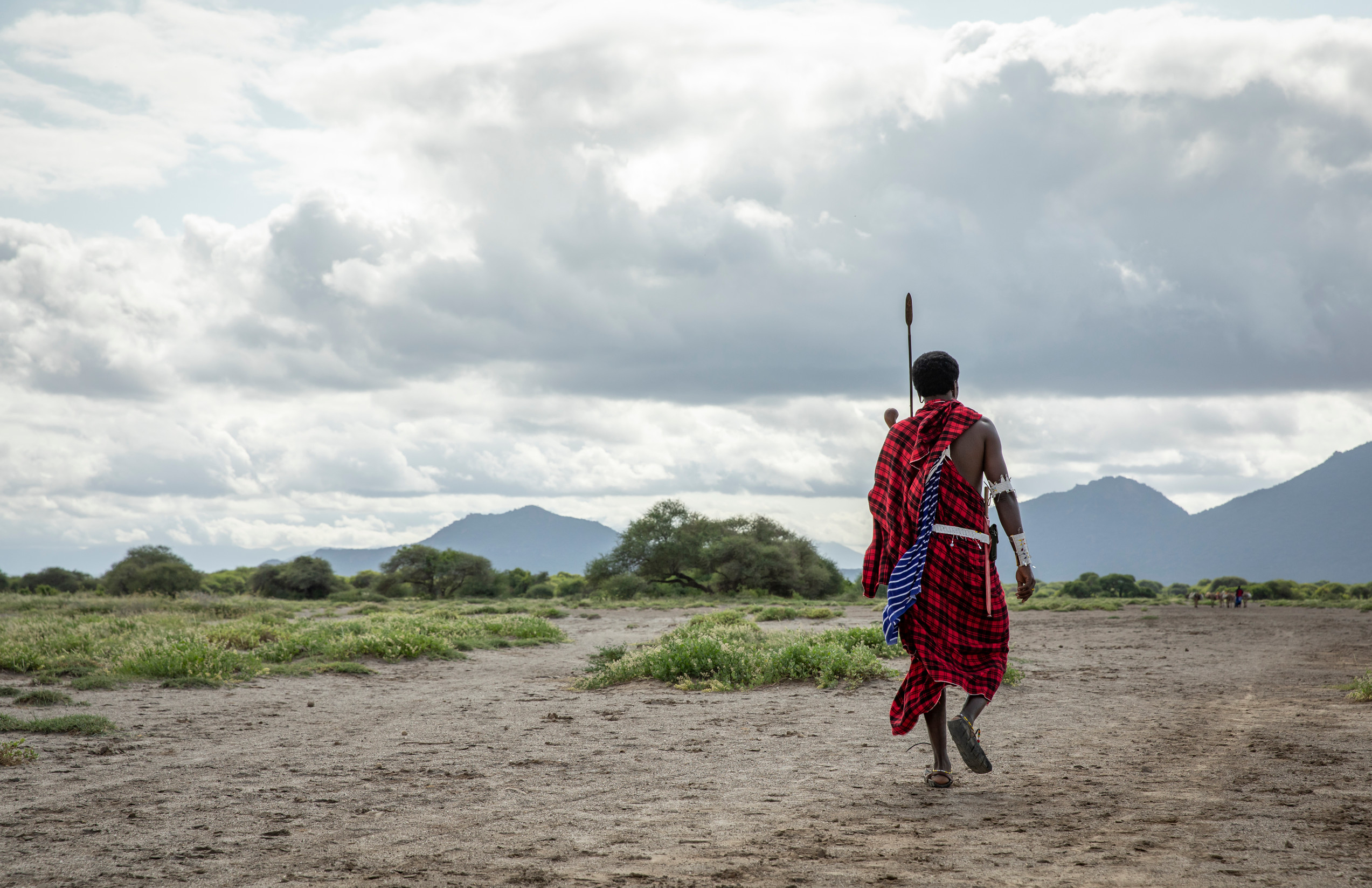
The Maasai have lived in harmony with nature and wildlife for centuries, making them one of the most environmentally conscious communities in East Africa. Their traditional livestock-herding lifestyle depends on seasonal grazing patterns, requiring them to move with their cattle in search of fresh pastures and water. They believe that all cattle belong to them by divine right, reinforcing their deep spiritual and economic reliance on livestock.
Living in Wildlife Areas
The Maasai people have long lived in wildlife-rich regions like the Serengeti, Ngorongoro, and Tarangire, coexisting with Africa’s most iconic animals. However, they face challenges such as livestock predation by lions, leopards, and hyenas, which threaten their economic and cultural foundation.
While lion hunting was once a rite of passage, modern conservation efforts promote alternative solutions like compensation schemes and predator-proof enclosures to reduce conflicts. Additionally, land limitations due to expanding national parks have restricted grazing areas, forcing some Maasai to abandon their semi-nomadic lifestyle.
Despite these challenges, eco-tourism and cultural tourism have emerged as new opportunities, allowing Maasai communities to collaborate with wildlife sanctuaries, showcase their traditions to visitors, and preserve their heritage while embracing conservation efforts.
Maasai & Conservation Efforts: Balancing Tradition and Wildlife Protection
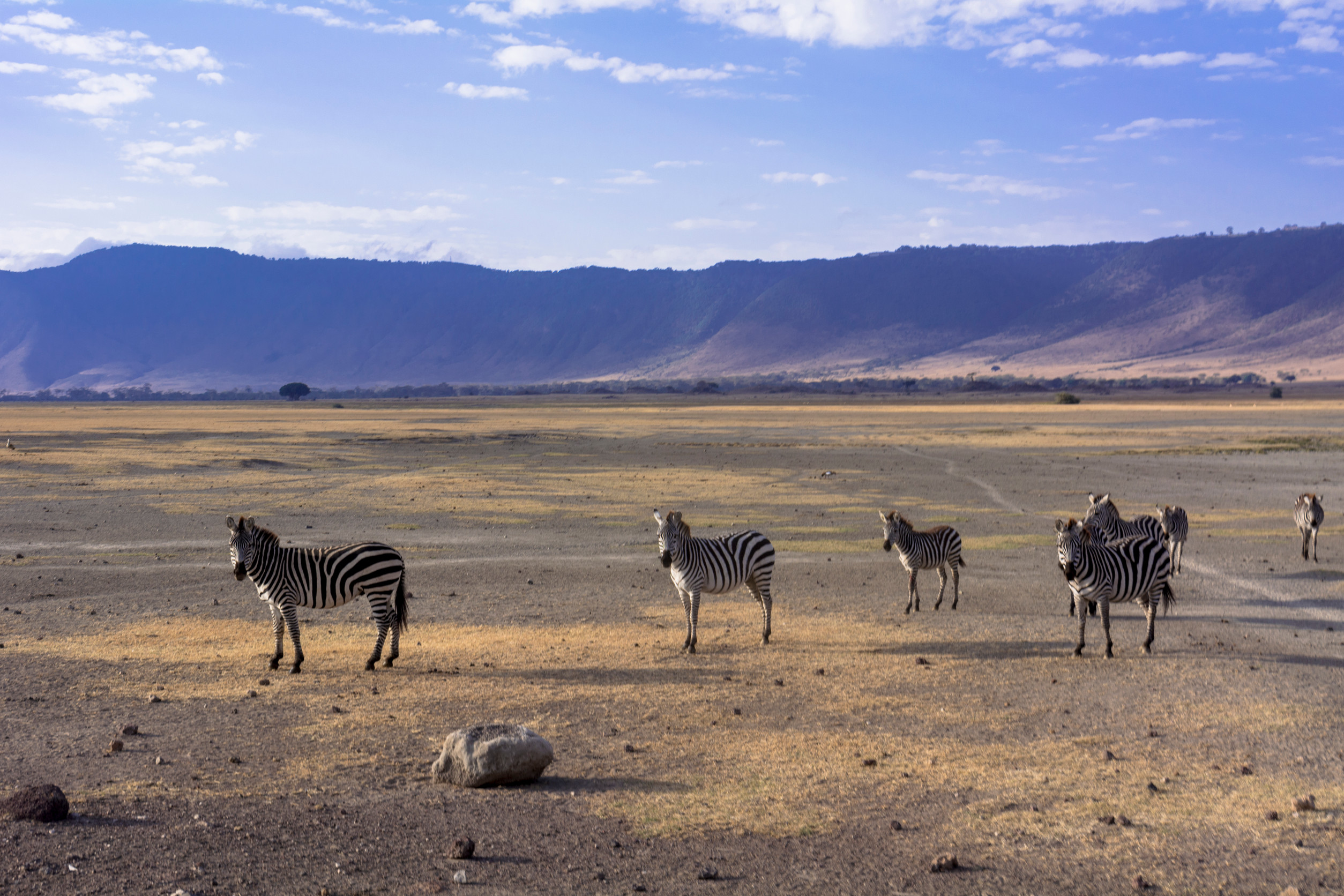
The Maasai community, traditionally living in harmony with nature, has faced challenges due to modern conservation laws restricting their grazing lands. However, they have adapted by actively participating in eco-tourism, operating cultural tourism programs, traditional lodges, and guided safaris that boost the local economy and conservation awareness.
Additionally, Maasai warriors serve as wildlife rangers, using their deep knowledge of the land to combat poaching and protect endangered species. Sustainable grazing schemes help balance livestock farming with conservation efforts, preventing overgrazing while preserving their cattle-raising traditions.
A notable example is the Ngorongoro Conservation Area, where Maasai coexist with wildlife, demonstrating an innovative model of conservation that integrates human settlements. Through these initiatives, the Maasai continue to sustain their cultural heritage while supporting Tanzania’s conservation goals.
Challenges Facing the Maasai
Despite their resilience, the Maasai face numerous challenges that threaten their traditional way of life. These challenges are primarily driven by external pressures and environmental changes.
- Land Loss: The Maasai have lost significant portions of their ancestral lands to national parks, wildlife reserves, and agricultural expansion. This has limited their access to grazing areas and water sources.
- Climate Change: Prolonged droughts and unpredictable weather patterns have made it increasingly difficult for the Maasai to sustain their livestock-based livelihood.
- Modernization: The encroachment of modern education, technology, and economic systems has led to a gradual erosion of traditional Maasai practices and values.
- Tourism: While tourism has provided economic opportunities for some Maasai communities, it has also led to cultural commodification and exploitation.
The Maasai and Conservation in Tanzania
The Maasai have a deep respect for nature and have traditionally lived in harmony with the environment. In recent years, some Maasai communities have become involved in conservation efforts, working to protect wildlife and promote sustainable land use. Here are some key Conservation initiatives:
- Community-Based Conservation: Some Maasai communities have established conservancies that allow them to manage their lands sustainably while benefiting from tourism revenue.
- Wildlife Protection: The Maasai have played a crucial role in protecting wildlife in areas such as the Serengeti and Ngorongoro Conservation Area, where they coexist with some of Africa’s most iconic species.
The Maasai in Modern Tanzania
While many Maasai continue to uphold their traditional way of life, others have adapted to modern society, pursuing education, employment, and business opportunities. This blend of tradition and modernity reflects the dynamic nature of Maasai culture. Key Trends among modernised Maasai are:
- Education: Increasing numbers of Maasai children are attending school, providing them with new opportunities while also posing challenges to traditional education systems.
- Economic Diversification: Some Maasai have diversified their livelihoods by engaging in tourism, agriculture, and small-scale businesses.
- Cultural Preservation: Efforts are being made to document and preserve Maasai traditions, including language, music, and beadwork, through cultural centers and community initiatives.
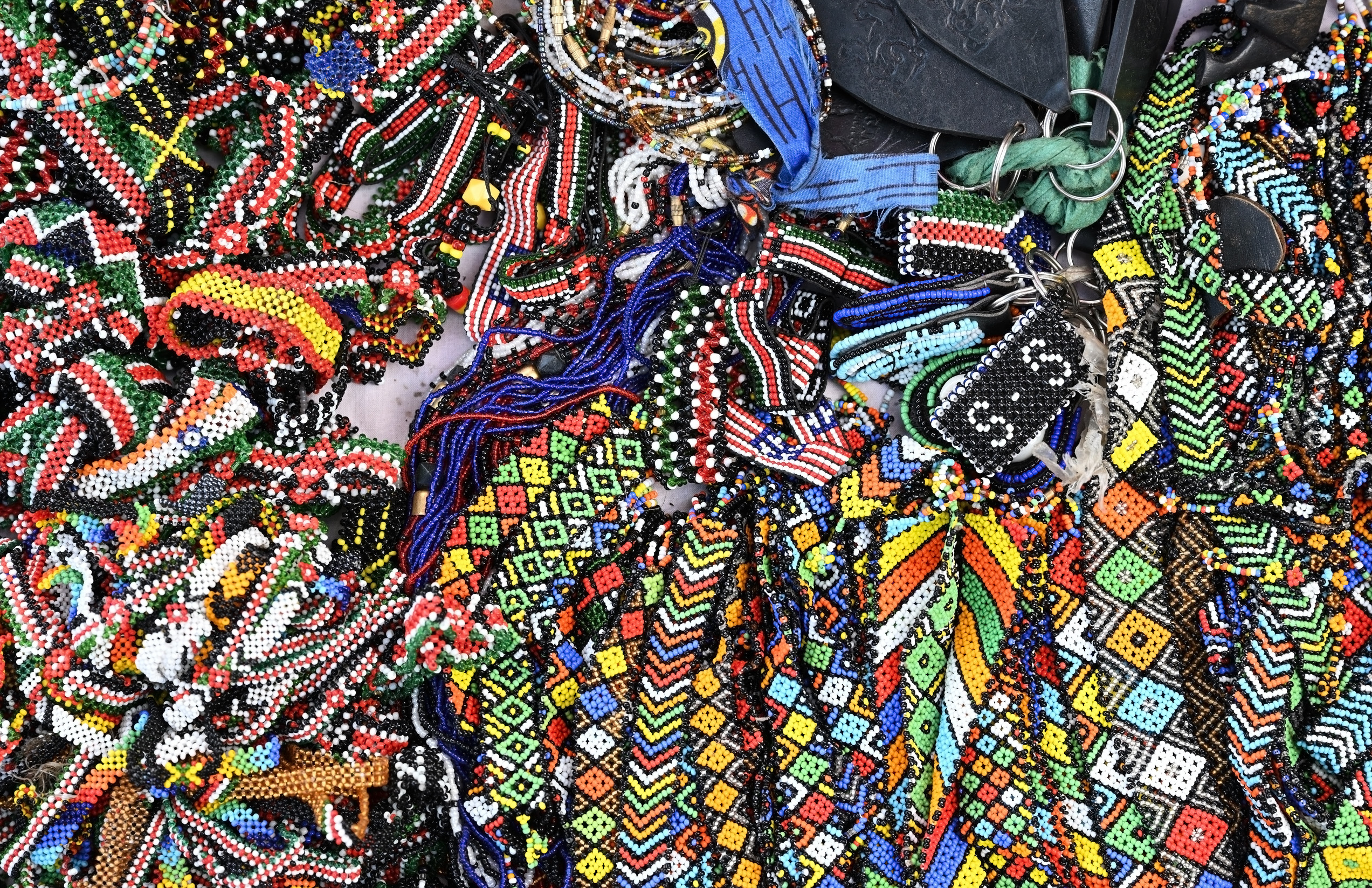
Visiting a Maasai Village in Tanzania
If you want to experience Maasai culture firsthand, you can visit an authentic Maasai village. However, be mindful of ethical tourism:
- Choose community-run experiences – Avoid commercialized "tourist traps."
- Ask before taking photos – Some Maasai prefer privacy.
- Support local crafts – Buying handmade Maasai beadwork helps the community.
- Be respectful of traditions – Learn basic Maa or Swahili greetings (e.g., "Supa" means hello).
Best Places for Ethical Maasai Cultural Tourism
For travelers seeking authentic and ethical Maasai cultural experiences, several locations in Tanzania offer meaningful interactions while respecting Maasai traditions and supporting local communities.
Ngorongoro Conservation Area – This UNESCO World Heritage Site is home to Maasai villages that coexist with wildlife. Visitors can explore bomas (traditional homesteads), witness ceremonies, and learn about Maasai customs while contributing to conservation-friendly tourism.
Mto wa Mbu (Near Lake Manyara) – A culturally diverse village where Maasai and other Tanzanian ethnic groups live together. Tourists can join guided cultural tours, visit local markets, and experience traditional Maasai dance performances, offering an immersive and responsible travel experience.
Arusha & Tarangire Areas – Many community-run Maasai settlements near these famous safari destinations welcome visitors. Ethical tourism initiatives here focus on education, sustainable crafts, and responsible engagement, ensuring that tourism benefits the Maasai without disrupting their way of life.
When visiting Maasai villages, it’s essential to choose ethical tour operators that promote fair compensation, genuine cultural exchange, and respect for Maasai traditions, ensuring a positive impact on both travelers and the Maasai community.